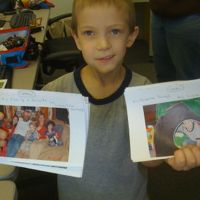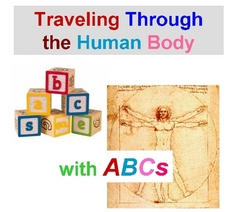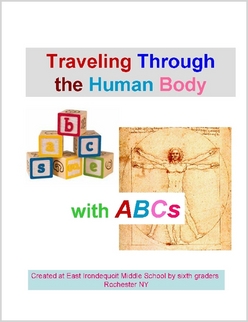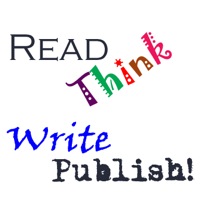Literacy specialist, Pat Martin, authored this guest blog on one of publishing projects.
Pat Martin last guest blogged about the Parents’ Literacy Publishing Project
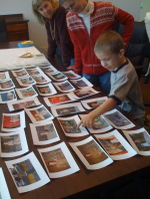 Cuyler, a winsome first grader, has published his first book. The experience encouraged him to exclaim, “I’m going to publish more than 1000 books. I have so much more to say.”
Cuyler, a winsome first grader, has published his first book. The experience encouraged him to exclaim, “I’m going to publish more than 1000 books. I have so much more to say.”
Mid-way through his second year of formal schooling, Cuyler should be reading about level 9/10 (guided reading text level as described by Pinnell and Fountas). He’s not. However, after reading a text created by MaryAnn McAlpin, a retired Reading Recovery teacher, for her grandson, Cuyler was motivated to create his own text using that model.
“I’m going to publish more than 1000 books. I have so much more to say.” ~ Cuyler, a 1st grader
Writing his personal text benefits Cuyler in so many ways. His extensive daily vocabulary is supported by actual printed text. His interests, vehicles of every description and outdoor life, become the basis of his text which further stimulates his daily effort to acquire reading skill. As such noted advocates for boy literacy as Ralph Fletcher and Michael Gurian note, primary texts and writing prompts seldom deal with the world that interests boys. There is scant opportunity to connect with the texts, to bring personal experience into the reading/writing or to interact with the text content.
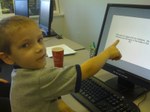 Capturing Cuyler’s explanations and descriptions as a book’s text mimics interactive writing or the daily journal writing in the reading Recovery lesson. And what child wouldn’t read and reread a book of their pictures and writing? What better way to achieve fluency? Certainly a more exciting, engaging and authentic method than grappling through Cuyler’s four inch thick stack of Dolch sight words – a practice he he finds less than engaging. Cuyler now sees himself as a literate individual. He is excited about the growing up as a reader and writer rather than defeated by the challenges that text holds.
Capturing Cuyler’s explanations and descriptions as a book’s text mimics interactive writing or the daily journal writing in the reading Recovery lesson. And what child wouldn’t read and reread a book of their pictures and writing? What better way to achieve fluency? Certainly a more exciting, engaging and authentic method than grappling through Cuyler’s four inch thick stack of Dolch sight words – a practice he he finds less than engaging. Cuyler now sees himself as a literate individual. He is excited about the growing up as a reader and writer rather than defeated by the challenges that text holds.
By providing text that supports him as a reader and validates him as a writer, Cuyler is on the path of literacy. And he is an excited traveler who wants to know “how many days until we go back to that learning lab so I can publish books.”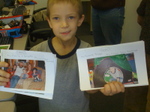
For sometime now I’ve been an advocate of new print on demand technologies to give students a chance to publish their learning for an authentic audience and purpose. I’ve partnered with Pat Martin, a literacy specialist and Suzanne Suor, an educational technology consultant, to open a Educational Publishing Learning Lab in Rochester NY. We offer a variety of training packages to assist teachers and districts in taking advantage of the new opportunities in digital publishing. The lab is located at ColorCentric digital publishers, so participants can not only learn how to publish, but tour the facility to see books being made. For more information on how you and your students can publish your own books visit our website Read > Think > Write > Publish
